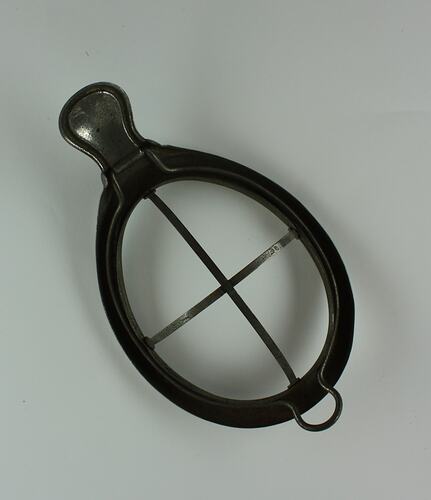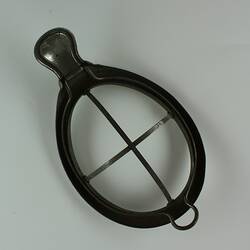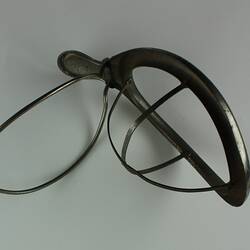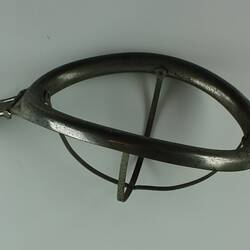Summary
Adult-sized Schimmelbusch-type anaesthetic mask, 1890-1950. Schimmelbusch masks were placed over the nose and mouth of patients to administer ether or chloroform. A gutter around the face was intended to prevent leakage of the anaesthetic onto the patient, which could cause irritation. German physician Dr Curt Schimmelbusch (1860-1895) designed the mask in 1890 while an assistant surgeon. It was used until around 1950.
The application of anaesthetics via the face presented significant challenges in cases where facial injury had occurred, such as those cases treated at the Queen Mary Hospital, Sidcup, during and after World War I, which specialized in facial reconstruction. Mask inhalation anaesthesia was not always practical or possible and, like other available anaesthetic techniques, did not always protect the airways from obstruction. Working at Sidcup with plastic surgeon Harold Gillies and anaesthetist E. Stanley Rowbotham, Ivan Whiteside Magill developed a technique of nasotracheal intubation for anaesthesia, facilitated by a new variety of angulated forceps (Magill forceps).
Physical Description
Anaesthetic mask frame comprising gutter around face (to prevent leakage of the anaesthetic) and frame with hinged section, which clips open to allow the placement of a cloth to be soaked in the anaesthetic).
More Information
-
Collecting Areas
-
Acquisition Information
Transfer from Society for Preservation of the Artifacts of Surgery & Medicine, 11 Jun 2013
-
Date Made
1890-1950
No maker's mark apparent, but the Geoffrey Kaye Museum of Anaesthetic History holds a similar Schimmelbusch mask with maker's name "ELLIOTT SYDNEY", eg. no. 333 - https://victoriancollections.net.au/items/562459672162f10bf022a622, accessed 16/8/2019. -
Classification
-
Category
-
Discipline
-
Type of item
-
Overall Dimensions
170 mm (Width), 63 mm (Depth), 106 mm (Height)
-
References
Information on the Schimmelbusch mask from the Wood Library Museum, [Link 1] accessed 29 April 2013. Information on the history of anesthetics from [Link 2] accessed 26 August 2013
-
Keywords
Medical Apparatus & Instruments, Anaesthetic Equipment, Surgery, World War I, 1914-1918



